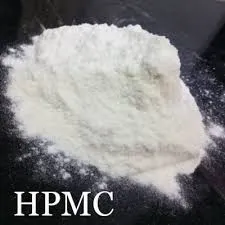
Nov . 24, 2024 10:45 Back to list
redispersible polymer powder manufacturing process
Understanding the Manufacturing Process of Redispersible Polymer Powder
Redispersible polymer powders (RDPs) are vital additives used in construction, coatings, and adhesives. These powders are derived from water-based polymer emulsions through drying processes, enabling them to be easily re-dispersed in water, thereby enhancing the performance of various formulations. The manufacturing process of RDPs involves several critical steps, each contributing to the quality and functionality of the final product.
The initial step in producing redispersible polymer powders is the synthesis of the polymer emulsion. This can be achieved through various polymerization methods such as emulsion polymerization, suspension polymerization, or bulk polymerization. The choice of method largely depends on the desired properties of the final RDP. Commonly used monomers include vinyl acetate, ethylene, styrene, and acrylates, which can be blended to attain specific performance characteristics.
Once the emulsion is synthesized, the next step involves drying. The two primary methods used for drying polymer emulsions are spray drying and freeze drying. Spray drying is the most common technique due to its efficiency and ability to preserve the properties of the polymer. In this process, the emulsion is atomized into fine droplets and rapidly dried using hot air, resulting in a dry powder form. On the other hand, freeze drying involves freezing the emulsion followed by sublimation under vacuum conditions. While this method is less common, it can be beneficial for heat-sensitive polymers.
redispersible polymer powder manufacturing process

Following the drying process, the RDPs undergo screening and milling to achieve the desired particle size distribution. This step is crucial because the performance of the redispersible powder in subsequent applications can be significantly influenced by its particle size.
Finally, the RDPs are packaged in moisture-proof bags or containers to ensure their stability and longevity. Proper storage conditions are vital, as exposure to moisture can cause clumping and loss of re-dispersibility.
In conclusion, the manufacturing process of redispersible polymer powders is a complex but well-defined series of steps that starts with polymer synthesis and culminates in the production of fine powders. The careful control of each stage ensures that the final product meets the high-performance standards required in various industrial applications. As demand for innovative construction solutions continues to grow, the role of RDPs in enhancing material properties remains indispensable.
-
Versatile Hpmc Uses in Different Industries
NewsJun.19,2025
-
Redispersible Powder's Role in Enhancing Durability of Construction Products
NewsJun.19,2025
-
Hydroxyethyl Cellulose Applications Driving Green Industrial Processes
NewsJun.19,2025
-
Exploring Different Redispersible Polymer Powder
NewsJun.19,2025
-
Choosing the Right Mortar Bonding Agent
NewsJun.19,2025
-
Applications and Significance of China Hpmc in Modern Industries
NewsJun.19,2025







